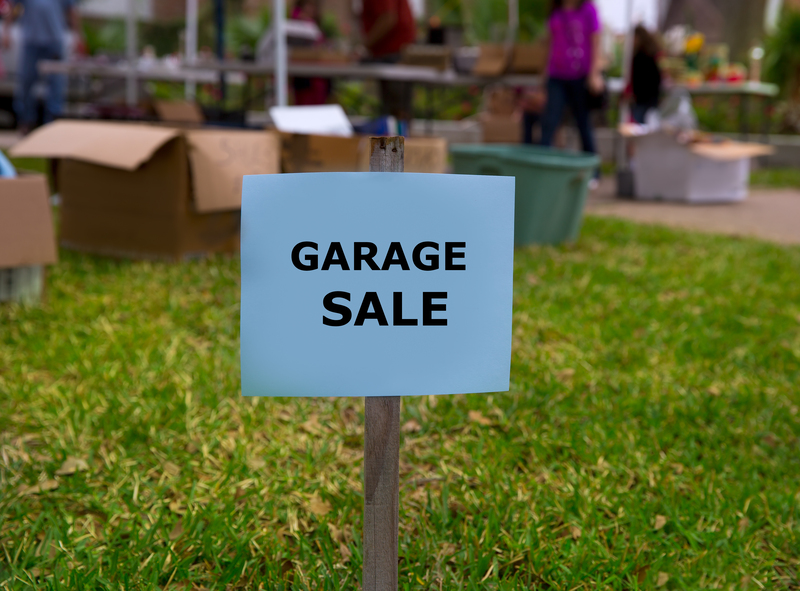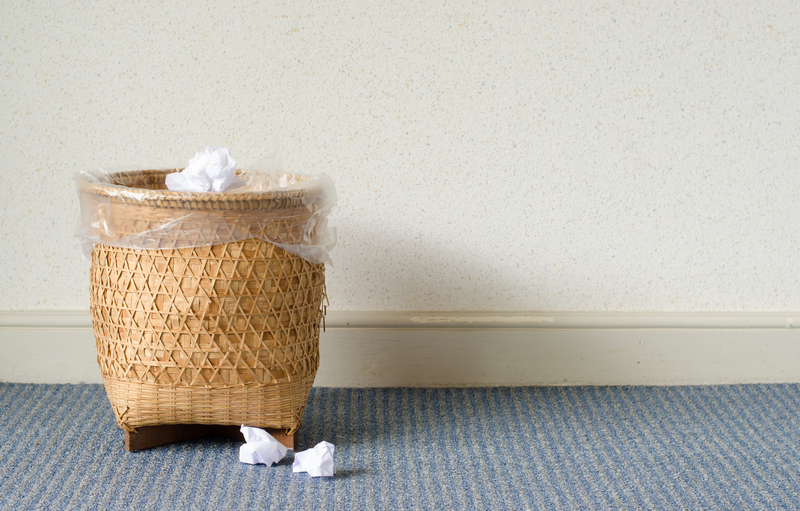Everything to Consider When Getting Rid of Bulky Furniture
When it's time to get rid of bulky furniture, many homeowners find themselves overwhelmed by the process. Whether you're moving, renovating, downsizing, or simply making space for new items, disposing of heavy and large pieces can be challenging. This comprehensive guide explores everything to consider when getting rid of bulky furniture: ways to dispose, donate, recycle, sell, and more. Read on to ensure your large-scale furniture removal is stress-free and environmentally responsible.

_Understanding the Challenge of Bulky Furniture Disposal_
Bulky furniture--like couches, beds, dressers, and large tables--often poses problems because of its size, weight, and material composition. Unlike small household items, you can't just toss them in the trash. Many municipalities have strict rules about large furniture disposal to prevent landfill overflows and environmental hazards.
Why Proper Disposal Matters
- Environmental Impact: Furniture can contain chemicals (such as flame retardants) and materials that harm the environment.
- Reuse Potential: Many items can be reused, upcycled, or broken down for parts.
- Local Laws: Fines can result from illegal dumping or improper curbside disposal.
- Community Benefits: Donated furniture can help those in need or support local charities.
1. Evaluate the Condition of Your Furniture
Before taking any steps to get rid of bulky furniture, honestly assess its condition:
- Is it in good, usable shape? (No broken parts, clean, odor-free)
- Does it need minor repairs, or is it beyond salvaging?
- Is it a specialty or antique item with resale value?
This evaluation will guide whether to donate, sell, recycle, or dispose of your oversized furniture.
2. Consider Donation and Reuse Options
One of the best ways to get rid of large furniture sustainably is by donating it. Many organizations accept gently used couches, beds, shelving, tables, and more.
Where to Donate Bulky Furniture
- Charities: Goodwill, Salvation Army, Habitat for Humanity ReStores
- Local Nonprofits & Homeless Shelters: Always check for guidelines and item needs.
- Schools or Churches: Some accept functional furniture for facilities or outreach programs.
Pro Tip: Many organizations offer free pick-up for large donations--saving you time and effort!
How to Prepare Furniture for Donation
- Clean the item inside and out.
- Disassemble when possible, for easier transport.
- Check for stains, pests, or odors: most charities will not accept infested or damaged items.
3. Selling Bulky Furniture: Make Some Extra Cash
Selling your old furniture can offset moving costs or put money back in your pocket. Several avenues exist for selling oversized furniture:
Best Ways to Sell Bulky Furniture
- Online Marketplaces: Facebook Marketplace, Craigslist, OfferUp, Nextdoor, eBay (Local Pickup)
- Consignment Stores: Local shops may sell your items for a commission.
- Garage or Yard Sales: A quick way to move several pieces at once.
Tip: Always provide clear photos, dimensions, and a detailed description. Be prepared to negotiate prices and arrange for pickups that accommodate buyers' schedules.
Safety Precautions for Selling Furniture
- Meet buyers in daylight, ideally in a public place or outside your home.
- Have help for lifting and moving large items--protect yourself from injury.
- Accept cash or trusted electronic forms of payment (like Venmo or PayPal).
4. Recycling Bulky Furniture Responsibly
If your unneeded items are beyond functional use, recycling is a great option. Many components--wood, metal, plastic, fabric--can be processed and reused.
How to Recycle Oversized Furniture
- Contact your municipal recycling center or bulk waste collection service.
- Research specialized recyclers for items like mattresses or electronics-laden furniture.
- Hire a green junk removal company that prioritizes recycling over landfill dumping.
Did You Know? Some companies disassemble old furniture to recover valuable materials, reducing environmental waste and maximizing resource recovery.
5. Bulk Trash Pickup and Haul-Away Services
Most cities offer periodic bulk waste collection days--but there are specific rules for scheduling, acceptable items, and curbside placement.
How to Schedule Bulk Furniture Pickup
- Check your city or county's waste management website for requirements and dates.
- Register your item for collection well in advance; there may be a limit per household.
- Prepare the furniture as instructed (disassembly may be required).
Private Junk Removal Services
- Fast, full-service options like 1-800-GOT-JUNK? and Junk King handle heavy lifting and disposal.
- Budget options: Rent a dumpster or a hauling truck for DIY removal.
Cost Warning: These convenience services charge by size and volume, so compare quotes to avoid surprises.
6. Upcycling Bulky Furniture: Creative Ways to Repurpose
If you enjoy DIY projects, upcycling is a fun and eco-friendly way to transform bulky old furniture into something new:
- Turn a battered table into a chic workbench or outdoor potting station.
- Convert headboards into unique wall art or benches.
- Repaint and reupholster dated chairs for a modern twist.
Explore home improvement blogs and social media for inspiration! You can extend the life of old furniture and reduce your carbon footprint.
7. Navigating Local Regulations and Restrictions
Every area has different rules for bulky furniture disposal. Some municipalities don't allow curbside furniture at all, or only collect certain types (e.g. no mattresses or electronics).
Avoid Fines and Legal Issues
- Review your local waste management guidelines.
- Never leave pricy items on the street or in empty lots ("illegal dumping").
- If you live in an apartment/condo, coordinate with building management for removal procedures.
Note: If you hire a hauling company, verify they're properly licensed and insured to protect yourself from liability.
8. Logistics: Moving Bulky Items Safely
Moving or removing heavy furniture requires the right planning to prevent injury and property damage.
Safety Tips for Lifting and Moving Large Furniture
- Recruit help or hire professionals--never try to lift a sofa solo!
- Use proper equipment: dollies, straps, sliders, and protective gloves.
- Clear walkways of tripping hazards and measure doorways before moving.
- Disassemble furniture whenever possible to make pieces more manageable.
Remember: Always bend at the knees, not the back, and lift with your legs to avoid strains or injuries.
9. What to Do with Specialty Bulky Items
Not all large items are created equal! Some require special handling:
- Mattresses & Box Springs: Many areas have dedicated mattress recycling services. Some charge small fees.
- Electronics & Office Equipment: Follow local e-waste recycling programs for desks with built-in electronics.
- Appliances: Fridges, microwaves, and washers require special disposal to handle chemicals and refrigerants.
- Antique Furniture: Consult experts to appraise value before selling or donating!
10. Environmental and Ethical Considerations
Every year, millions of tons of furniture end up in landfills. By reusing, donating, recycling, or upcycling your old items, you help:
- Reduce landfill waste and environmental pollution.
- Promote sustainability and responsible consumerism.
- Give furniture a new life, supporting local communities in need.
Summary: Your Furniture Removal Checklist
- Check the condition: Can it be reused or recycled?
- Explore donation and selling options.
- Research recycling programs for non-reusable pieces.
- Contact bulk waste collection or junk removers if necessary.
- Follow safety best practices when moving heavy items.
- Stay compliant with local disposal laws.
By considering the physical, legal, and environmental aspects of bulky furniture disposal, you ensure the process is efficient, safe, and eco-friendly. Planning ahead and choosing the right strategy will save you time, minimize waste, and even help others in your community.

FAQs - Everything You Need to Know About Disposing of Bulky Furniture
Can bulky furniture go in a dumpster?
*Not always!* Local rules may prohibit certain items. Check with your waste management provider before dumping large pieces, especially mattresses and electronics.
How can I find free furniture removal near me?
Many charities offer free pick-up for usable donations. Check online marketplaces or city services for scheduled bulk pick-up days.
What if my furniture is in bad shape?
Furniture that's too damaged for reuse should be recycled or disposed of via bulk trash pickup or a professional hauling service, rather than illegal dumping.
Conclusion: Make Bulky Furniture Removal an Easy and Responsible Task
Getting rid of large, heavy furniture can seem daunting, but with the right approach, it's a manageable, rewarding process. Whether you're donating, selling, recycling, or hauling away, each step you take can help minimize environmental impact and benefit your local community.
Always research your options, follow best practices, and remember: effective bulky furniture disposal is about more than just clearing space--it's about doing the right thing!